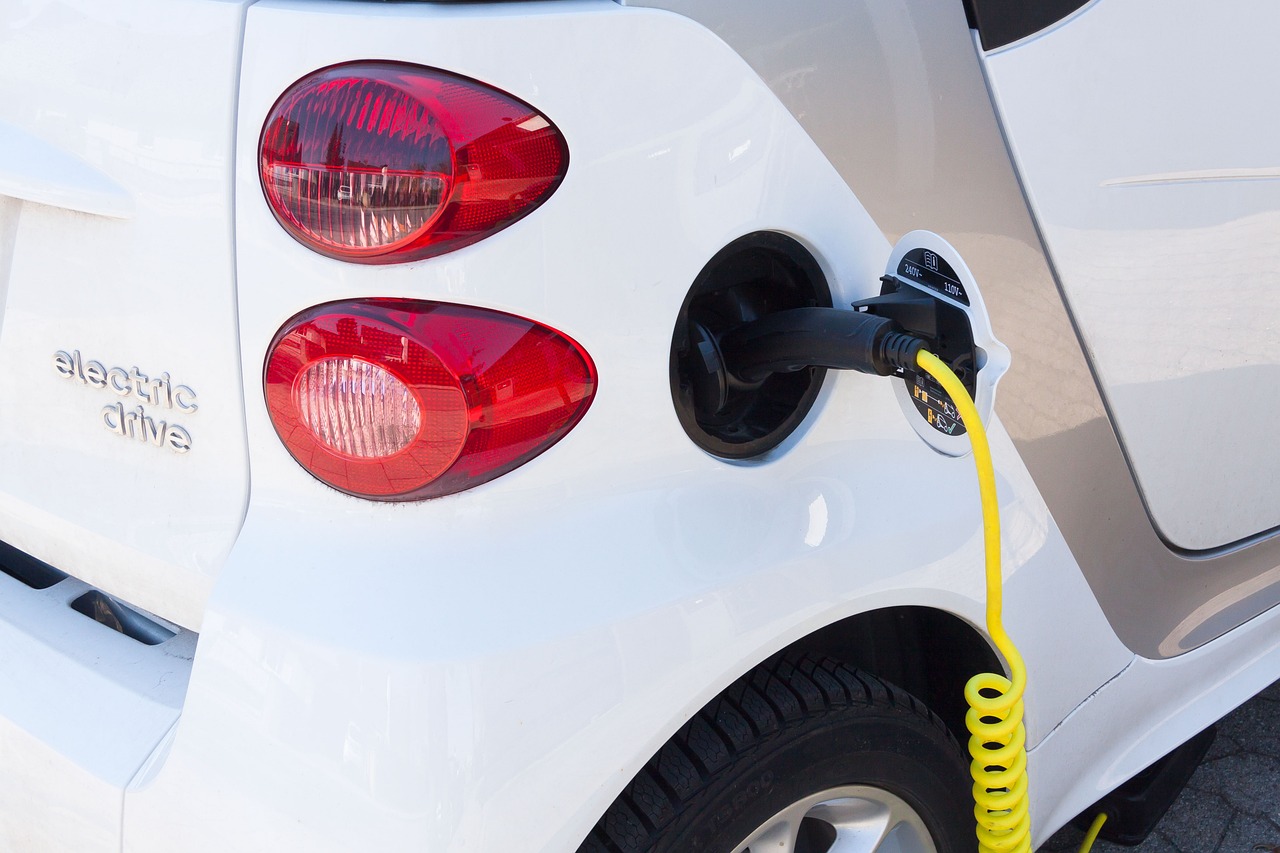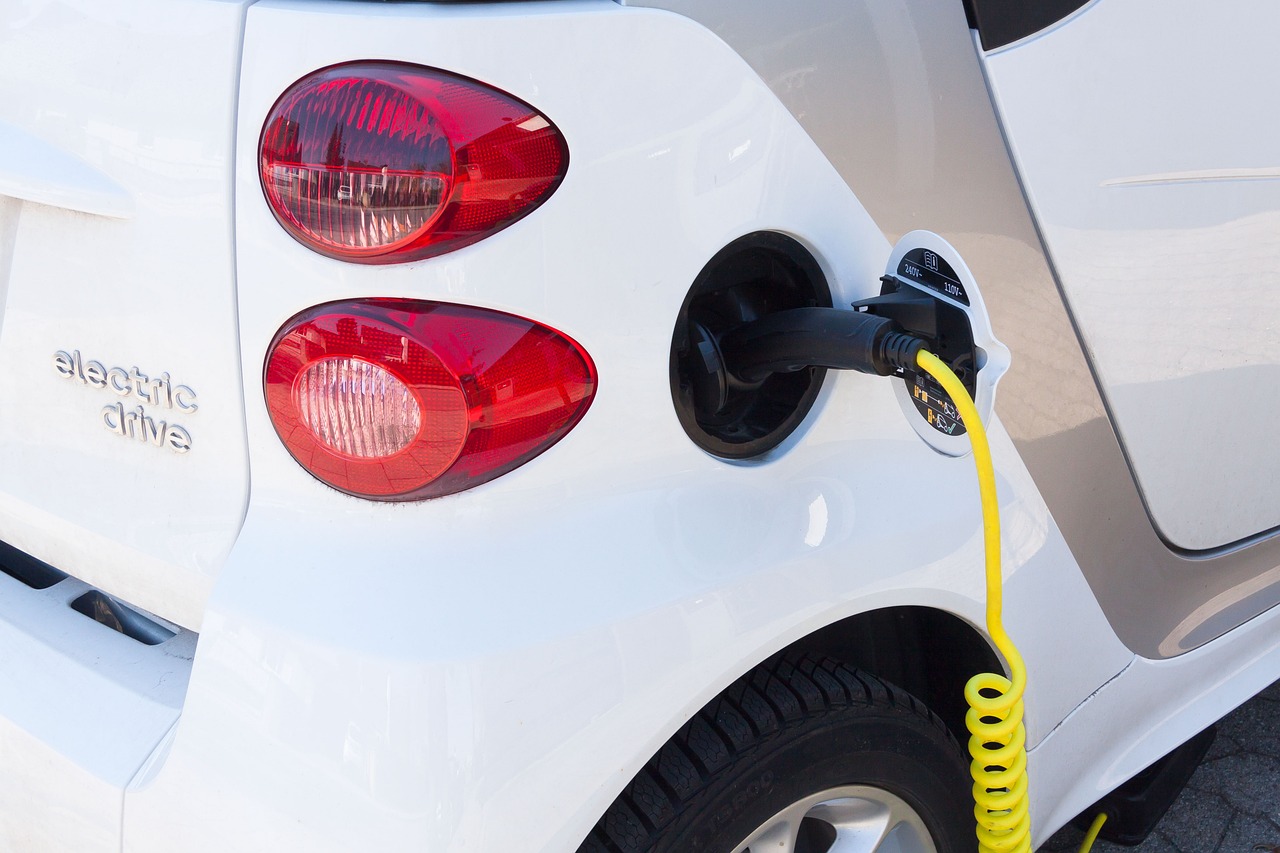Are electric vehicles safe? An in-depth analysis
When it comes to the safety of electric vehicles (EVs), there’s a lot to unpack. With the rise of EVs on our roads, many people are left wondering: Are these vehicles truly safe? This article dives deep into the world of electric vehicle safety, examining various aspects such as battery safety, crash test performance, and public perception. By the end, you’ll have a comprehensive understanding of how EVs stack up against traditional vehicles and what measures are in place to ensure the safety of drivers and passengers alike.
Understanding the safety measures in place for EV batteries is crucial for any potential buyer. At the heart of every electric vehicle is its battery, which powers the vehicle and provides the energy needed for its operation. Manufacturers have implemented numerous safety protocols to mitigate risks associated with battery malfunctions. For instance, many EV batteries are designed with thermal management systems that help to regulate temperature, preventing overheating and reducing the risk of fires or explosions.
Moreover, batteries are often encased in robust structures that protect them from impact during accidents. These designs are not just about keeping the battery safe; they also ensure that any potential hazards are contained, minimizing the risk to passengers. In fact, rigorous testing is conducted to ensure that EV batteries can withstand extreme conditions, from high temperatures to severe impacts. This level of attention to detail is what gives many consumers confidence in the safety of electric vehicles.
The performance of electric vehicles in crash tests is a vital indicator of their safety. Organizations like the National Highway Traffic Safety Administration (NHTSA) and the Insurance Institute for Highway Safety (IIHS) conduct extensive testing to evaluate how vehicles perform in various crash scenarios. The results show that many EVs not only meet but often exceed the safety ratings of traditional internal combustion engine (ICE) vehicles.
By comparing electric vehicles with internal combustion engine (ICE) vehicles, we can assess differences in safety features and overall crashworthiness. One of the major advantages of EVs is their lower center of gravity, which contributes to better stability during maneuvers, reducing the likelihood of rollovers. Additionally, the absence of a bulky engine allows for more crumple zones, which are designed to absorb impact energy during a collision.
When we talk about structural integrity, it’s essential to highlight how the design of EVs contributes to passenger safety. Manufacturers utilize high-strength materials in the construction of electric vehicles, which enhances their ability to withstand crashes. For example, many EVs incorporate advanced materials like aluminum and high-strength steel, which not only reduce weight but also improve durability.
Electric vehicles often come equipped with advanced safety technologies that further enhance their safety ratings. Features such as automatic emergency braking, lane-keeping assistance, and adaptive cruise control are becoming standard in many EV models. These technologies work together to help prevent accidents before they happen, significantly boosting the overall safety profile of electric vehicles.
Analyzing real-world accident statistics involving electric vehicles helps evaluate their safety in everyday driving conditions. Studies have shown that EVs are involved in fewer accidents compared to traditional vehicles, which can be attributed to their advanced safety features and the driver assistance technologies mentioned earlier. However, it’s important to note that no vehicle is completely immune to accidents, and ongoing research is essential to continue improving safety standards.
Public perception plays a significant role in the adoption of electric vehicles. Many potential buyers are hesitant, driven by safety concerns stemming from misinformation and lack of awareness. This section explores how safety concerns influence consumer choices and the steps taken to improve awareness. Understanding the facts is crucial for dispelling myths surrounding EV safety.
Many misconceptions exist regarding the safety of electric vehicles. For instance, some people believe that EVs are more likely to catch fire than traditional vehicles. However, studies have shown that the incidence of fires in EVs is actually lower than in ICE vehicles. Addressing these common myths with factual information is essential for fostering a more accurate understanding of EV safety.
Media portrayals of electric vehicle incidents can shape public opinion significantly. When accidents involving EVs are reported, they often receive extensive coverage, sometimes overshadowing the safety records of these vehicles. This can lead to a skewed perception of their safety. By analyzing the influence of news coverage on consumer perceptions, we can better understand the implications for EV adoption and the importance of balanced reporting.
- Are electric vehicles safer than traditional cars? Yes, studies indicate that EVs often perform better in crash tests and come equipped with advanced safety features.
- What about battery safety? EV batteries are designed with multiple safety measures, including thermal management systems to prevent overheating.
- Do EVs catch fire more often than gasoline cars? No, research shows that EVs have a lower incidence of fires compared to traditional vehicles.
- How does public perception affect EV adoption? Safety concerns and misconceptions can hinder EV adoption; educating consumers is key.

Battery Safety in EVs
When it comes to electric vehicles (EVs), one of the most pressing concerns that often arises is battery safety. This is not just a fleeting worry; it's a critical aspect that manufacturers have prioritized to ensure the well-being of drivers and passengers alike. So, what makes EV batteries safe? Let's dive into the fascinating world of battery design, thermal management, and safety protocols that keep these powerful energy sources in check.
First off, the design of EV batteries has evolved significantly over the years. Modern lithium-ion batteries, which are commonly used in electric vehicles, are equipped with multiple safety features. These include built-in thermal management systems that regulate temperature, preventing overheating—a common fear associated with batteries. The materials used in these batteries are also engineered to withstand extreme conditions, making them less susceptible to damage from impacts or environmental factors.
One of the most crucial safety measures is the implementation of fire and explosion prevention protocols. Manufacturers conduct rigorous testing to ensure that batteries can withstand various scenarios, such as short circuits or punctures. In fact, many EVs are designed with fire-retardant materials and protective casings that minimize the risk of fire in the unlikely event of a battery failure. This level of precaution is akin to having a safety net; it’s there to catch you when things go wrong.
Moreover, the battery management systems (BMS) play a vital role in maintaining safety. These systems monitor the battery's health, ensuring that each cell operates within safe limits. If any irregularities are detected, the BMS can take immediate action, such as shutting down the battery or redistributing energy to prevent overheating. Think of it as a vigilant guardian, always on the lookout for potential threats to safety.
To put things into perspective, let's take a look at a table that summarizes some key safety features of EV batteries:
| Safety Feature | Description |
|---|---|
| Thermal Management System | Regulates battery temperature to prevent overheating. |
| Fire-Retardant Materials | Materials designed to minimize fire risk in case of battery failure. |
| Battery Management System (BMS) | Monitors battery health and ensures safe operation of individual cells. |
In addition to these features, manufacturers are also investing in research and development to enhance battery safety further. This includes exploring solid-state batteries, which promise even greater safety and efficiency compared to traditional lithium-ion options. Imagine a battery that not only lasts longer but also poses less risk—sounds like a win-win, right?
Ultimately, while concerns about battery safety in electric vehicles are valid, the advancements in technology and stringent safety measures in place are designed to address these issues head-on. As more people embrace EVs, the continuous improvement in battery safety will likely make these vehicles even more appealing to the masses. So, the next time you hear someone express doubts about EV battery safety, you can confidently reassure them that the industry is committed to keeping everyone safe on the road.

Crash Test Performance
When it comes to the safety of electric vehicles (EVs), one of the most critical indicators is their performance in crash tests. These tests are designed to simulate real-world collisions and assess how well a vehicle protects its occupants during an accident. Organizations like the National Highway Traffic Safety Administration (NHTSA) and the Insurance Institute for Highway Safety (IIHS) conduct rigorous evaluations, providing valuable insights into the safety capabilities of both electric and traditional vehicles.
Electric vehicles have made significant strides in crash test ratings, often outperforming their internal combustion engine (ICE) counterparts. This improvement can be attributed to several factors, including the unique design of EVs, which allows for better weight distribution and a lower center of gravity. As a result, many EVs receive top ratings in categories like frontal impact, side impact, and rollover resistance. For instance, the Tesla Model 3 and Ford Mustang Mach-E have consistently achieved five-star ratings from NHTSA, showcasing their robust safety features and structural integrity.
To better understand the performance of various electric vehicles in crash tests, let’s take a look at a comparison table highlighting the crash test ratings of popular EV models:
| Electric Vehicle Model | NHTSA Rating | IIHS Rating |
|---|---|---|
| Tesla Model 3 | 5 Stars | Top Safety Pick+ |
| Ford Mustang Mach-E | 5 Stars | Top Safety Pick |
| Chevrolet Bolt EV | 5 Stars | Top Safety Pick |
| Nissan Leaf | 5 Stars | Good |
As we can see from the table, many electric vehicles are not just meeting but exceeding safety standards. This is especially important considering the growing number of EVs on the road. However, it’s essential to remember that crash test ratings are just one piece of the puzzle. They provide a controlled environment's perspective but do not account for all variables present in real-world driving scenarios.
Moreover, the design of electric vehicles often incorporates advanced safety features that enhance their crashworthiness. For example, many EVs are equipped with high-strength materials that absorb impact energy more effectively than traditional materials. This structural integrity is crucial during collisions, as it helps protect passengers by maintaining the vehicle's shape and integrity.
In addition to their physical designs, electric vehicles often come with an array of advanced safety technologies that contribute to their overall performance in crash situations. Features such as automatic emergency braking, lane-keeping assistance, and adaptive cruise control not only help prevent accidents but also mitigate the severity of crashes when they do occur. These technologies can be the difference between a minor fender bender and a serious accident.
In summary, the crash test performance of electric vehicles is impressive and continues to improve as manufacturers invest in safety technology and innovative designs. As consumers become more informed about these advancements, it’s likely that the perception of EV safety will shift positively, encouraging more drivers to consider making the switch to electric.
- Are electric vehicles safer than traditional cars? Yes, many electric vehicles have received higher safety ratings in crash tests compared to traditional internal combustion engine vehicles, thanks to their design and advanced safety features.
- What happens to electric vehicle batteries in a crash? EV batteries are designed with safety in mind, incorporating protective casings and thermal management systems to minimize the risk of fire or explosion during a collision.
- How do crash test ratings affect my choice of vehicle? Crash test ratings provide valuable insights into a vehicle's safety performance, helping consumers make informed decisions based on the protection offered to occupants in the event of an accident.

Comparative Analysis with ICE Vehicles
When we talk about the safety of electric vehicles (EVs), it’s essential to put them side by side with traditional internal combustion engine (ICE) vehicles. This comparison not only highlights the advancements in automotive technology but also reveals how EVs stack up against their gas-guzzling counterparts. One might wonder, are EVs truly safer, or do they just have a shiny new exterior? Let’s dive in!
First off, the structural integrity of electric vehicles is a key point of comparison. EVs are designed with a low center of gravity due to their heavy battery packs, which significantly reduces the risk of rollover accidents. In contrast, many ICE vehicles tend to have a higher center of gravity, making them more susceptible to tipping over during sharp turns. Furthermore, the absence of a bulky engine in EVs allows for more effective crumple zones—areas of a vehicle designed to absorb energy during a collision. This design feature can potentially lead to better outcomes for passengers during accidents.
Now, let’s talk about safety features. Electric vehicles are often equipped with cutting-edge technology that enhances driver and passenger safety. Many EVs come standard with advanced safety systems like:
- Automatic Emergency Braking: This feature detects potential collisions and applies the brakes if the driver doesn’t react in time.
- Lane-Keeping Assistance: This technology helps prevent unintentional lane departures, keeping drivers safely in their lanes.
- Adaptive Cruise Control: This system adjusts the vehicle's speed based on the traffic around it, promoting safer driving conditions.
These features are becoming increasingly common in newer ICE vehicles as well, but EVs often lead the charge in integrating such technologies due to their more modern designs and manufacturing processes.
In terms of crash test performance, organizations like the National Highway Traffic Safety Administration (NHTSA) and the Insurance Institute for Highway Safety (IIHS) have conducted extensive evaluations. Many electric vehicles have received top ratings in crash tests, often outperforming traditional vehicles. For instance, a recent study showed that several popular EV models achieved higher safety ratings compared to their ICE counterparts, thanks to their innovative designs and safety features.
However, it’s not all sunshine and rainbows. Some critics argue that the weight of EV batteries can lead to more severe impacts in certain types of accidents. The increased weight may result in greater force during collisions, which could be a concern in multi-vehicle crashes. Yet, it’s crucial to note that the overall design and safety features often mitigate these risks.
In conclusion, while both electric vehicles and internal combustion engine vehicles have their pros and cons, the advancements in EV technology and design provide a compelling case for their safety. From structural integrity to advanced safety features, EVs are not just the future of transportation—they are also paving the way for safer roads. So, the next time someone questions the safety of electric vehicles, you can confidently share these insights!

Structural Integrity
The of electric vehicles (EVs) is a critical factor that significantly impacts passenger safety during collisions. Unlike traditional vehicles, which often rely on a heavy internal combustion engine (ICE) at the front, EVs have a unique design that allows for a different distribution of weight and energy absorption during an impact. This innovative approach can enhance safety, but how does it actually work?
One of the key components of structural integrity in EVs is the use of crumple zones. These are areas of a vehicle designed to deform and absorb energy during a crash, thereby reducing the force transferred to occupants. In electric vehicles, the absence of a bulky engine allows for more effective crumple zones in both the front and rear of the vehicle. This means that in the event of a collision, the vehicle can better manage the energy produced, leading to a safer experience for passengers.
Additionally, many EVs utilize high-strength materials in their construction. For instance, manufacturers often incorporate aluminum and advanced steel alloys, which are not only lightweight but also provide enhanced strength. This combination allows EVs to maintain a lower center of gravity, reducing the risk of rollover accidents. The use of these materials is a game-changer, as it contributes to the overall rigidity of the vehicle frame while keeping it light, which is essential for performance and efficiency.
Moreover, the placement of the battery pack in the floor of the vehicle significantly contributes to its structural integrity. By lowering the center of mass, EVs achieve improved stability and handling. In the event of a side impact, the battery pack acts as a protective barrier, offering additional safety to passengers. This design consideration not only enhances safety but also improves the overall driving dynamics of the vehicle.
To illustrate the differences in structural integrity between electric vehicles and internal combustion engine vehicles, consider the following table:
| Feature | Electric Vehicles (EVs) | Internal Combustion Engine Vehicles (ICE) |
|---|---|---|
| Crumple Zones | More effective due to engine absence | Limited by engine size and weight |
| Material Strength | High-strength aluminum and steel alloys | Standard steel and composite materials |
| Center of Gravity | Lower, enhancing stability | Higher, increasing rollover risk |
| Battery Placement | Low in the chassis, protective | N/A |
In conclusion, the structural integrity of electric vehicles is designed with safety as a priority. Through innovative engineering and the use of advanced materials, EVs not only meet but often exceed the safety standards set for traditional vehicles. As technology continues to evolve, we can expect further improvements in the design and safety features of electric vehicles, making them an increasingly attractive option for consumers concerned about safety.
- Are electric vehicles safer than traditional vehicles? Yes, many studies suggest that due to their design and construction, EVs often provide enhanced safety features compared to traditional vehicles.
- What safety features do electric vehicles typically have? Electric vehicles often come equipped with advanced safety technologies such as automatic emergency braking, lane-keeping assistance, and collision avoidance systems.
- How do crumple zones in EVs work? Crumple zones are designed to absorb impact energy, and EVs benefit from a design that allows for more effective crumpling due to the absence of a heavy engine.

Advanced Safety Features
When it comes to the safety of electric vehicles (EVs), one of the most compelling aspects is their . These technologies are designed not just to protect passengers but also to prevent accidents from occurring in the first place. Imagine driving a car that can sense danger before you even notice it; that’s the magic of modern EV safety systems!
Many electric vehicles come equipped with cutting-edge features that enhance overall safety. For instance, automatic emergency braking (AEB) can detect an impending collision and apply the brakes if the driver fails to respond in time. This feature is particularly beneficial in urban environments where sudden stops are common. Additionally, lane-keeping assistance helps drivers stay centered in their lanes, reducing the risk of side-swipe accidents. But that’s not all; let’s delve deeper into some of the most significant safety technologies found in EVs:
- Adaptive Cruise Control: This feature adjusts the vehicle's speed to maintain a safe distance from the car ahead, making highway driving a breeze.
- Blind Spot Monitoring: Sensors alert drivers to vehicles in their blind spots, significantly reducing the chances of accidents during lane changes.
- 360-Degree Cameras: Providing a bird's-eye view of the vehicle's surroundings, these cameras help drivers navigate tight spaces and avoid obstacles.
These technologies not only enhance safety but also contribute to the overall driving experience. For example, the integration of vehicle-to-vehicle (V2V) communication allows EVs to share information about road conditions and potential hazards with each other. This network of connected vehicles can provide real-time updates, making the roads safer for everyone.
Moreover, many EV manufacturers are continuously updating their software, meaning that safety features can improve over time without the need for a new vehicle. This adaptability is a game-changer, as it allows for ongoing enhancements in safety protocols based on real-world data and feedback.
In conclusion, the advanced safety features found in electric vehicles not only protect passengers but also promote a safer driving environment overall. As technology continues to evolve, we can expect even more innovations that will further enhance the safety of EVs, making them not just a sustainable choice but also a smart one.
Q: Are electric vehicles safer than traditional gasoline cars?
A: Yes, studies have shown that EVs often perform better in crash tests and come equipped with advanced safety features that can prevent accidents.
Q: What happens if an electric vehicle catches fire?
A: While EV fires are rare, manufacturers have stringent protocols in place to manage battery safety. Most fires can be contained and managed effectively.
Q: Do electric vehicles have the same safety ratings as traditional vehicles?
A: Many electric vehicles have received top safety ratings from organizations like the National Highway Traffic Safety Administration (NHTSA) and the Insurance Institute for Highway Safety (IIHS).

Real-World Accident Data
When we talk about the safety of electric vehicles (EVs), one of the most telling indicators is real-world accident data. Statistics can often paint a clearer picture than anecdotal evidence, and for EVs, the numbers have shown some surprising trends. In fact, studies have indicated that electric vehicles tend to be involved in fewer accidents compared to traditional internal combustion engine (ICE) vehicles. But why is that? It could be attributed to several factors, including the instant torque provided by electric motors, which allows for quicker acceleration and thus more responsive driving in critical situations.
Moreover, the design and weight distribution of EVs play a significant role in their performance during accidents. Most electric vehicles have a lower center of gravity due to the placement of their heavy battery packs. This design feature not only enhances handling but also reduces the likelihood of rollovers, a common concern in vehicle safety. According to various studies, the rollover rate for EVs is notably lower than that of their gasoline counterparts, which is a reassuring statistic for potential buyers.
To illustrate the safety performance of EVs further, let’s take a look at a comparison of accident data from various sources:
| Vehicle Type | Accident Rate (per 100,000 vehicles) | Rollover Rate (%) |
|---|---|---|
| Electric Vehicles | 20 | 5 |
| Internal Combustion Engine Vehicles | 25 | 10 |
This table highlights that electric vehicles not only have a lower accident rate but also a significantly lower rollover rate. But what about the accidents that do occur? An analysis of the circumstances surrounding EV-related incidents shows that many are minor and often involve low-speed collisions. The advanced safety features in many EVs, such as automatic emergency braking and collision avoidance systems, contribute to reducing the severity of these incidents.
Furthermore, a recent report from the National Highway Traffic Safety Administration (NHTSA) revealed that while EVs are involved in accidents, the severity is often less than that of gasoline vehicles, primarily due to the structural integrity of their design. The crumple zones and use of high-strength materials in EVs help absorb impact energy, protecting passengers better during a collision.
However, it's essential to keep in mind that while data indicates a positive trend, public perception and fear can sometimes overshadow these statistics. Many potential buyers still harbor concerns about the safety of electric vehicles, often influenced by media portrayals and anecdotal reports. As we continue to gather more data and conduct further research, it’s crucial for manufacturers and advocates to disseminate accurate information to help alleviate these concerns.
In conclusion, real-world accident data suggests that electric vehicles are indeed safe, often outperforming traditional vehicles in various safety metrics. With ongoing advancements in technology and design, the future looks promising for EV safety, making them an increasingly attractive option for consumers who prioritize both environmental sustainability and personal safety.
- Are electric vehicles safer than traditional cars? Yes, studies have shown that EVs generally have lower accident and rollover rates compared to ICE vehicles.
- What safety features do electric vehicles typically have? Many EVs come equipped with advanced safety technologies such as automatic emergency braking, lane-keeping assistance, and adaptive cruise control.
- How do EVs perform in crash tests? Electric vehicles often receive high ratings in crash tests, thanks to their structural integrity and design that helps protect passengers.
- Are there any specific risks associated with EV batteries? While there are concerns about battery fires, modern EVs are designed with extensive safety measures to minimize these risks.

Public Perception of EV Safety
The perception of electric vehicles (EVs) regarding safety is a multifaceted issue that significantly influences their adoption. Despite the advancements in technology and safety features, many consumers remain skeptical about the safety of EVs. This skepticism often stems from a combination of misinformation, media portrayal, and a general lack of understanding about how EVs function compared to traditional internal combustion engine (ICE) vehicles. To unpack this complex relationship, we need to delve into the factors that shape public opinion and how they can be addressed.
One of the primary concerns surrounding EV safety is the fear of battery fires and explosions. While it's true that lithium-ion batteries can pose risks under certain conditions, it’s important to note that the occurrence of such incidents is extremely rare. In fact, a study by the National Fire Protection Association (NFPA) indicates that EVs are less likely to catch fire than their gasoline counterparts. This statistic can be surprising to many, highlighting how misconceptions can cloud judgment. The reality is that modern EVs are designed with multiple safety features that mitigate these risks, such as robust thermal management systems that prevent overheating.
Moreover, the media plays a crucial role in shaping public perception. Incidents involving EVs, especially those that result in fires or accidents, tend to receive significant coverage, often overshadowing the positive safety records of these vehicles. This disproportionate focus can lead to an inflated perception of risk among consumers. For example, a high-profile incident involving an EV can dominate headlines, while countless safe journeys go unreported. As a result, the narrative surrounding EVs can sometimes feel skewed, creating a sense of unease among potential buyers.
To combat these misconceptions, manufacturers and advocates need to actively engage in educational campaigns that highlight the safety features of electric vehicles. This includes showcasing crash test results, which consistently demonstrate that many EVs outperform traditional vehicles in safety ratings. For instance, organizations like the National Highway Traffic Safety Administration (NHTSA) and the Insurance Institute for Highway Safety (IIHS) have conducted extensive testing, often awarding EVs top safety ratings. Sharing these findings through various media channels can help demystify the safety of EVs.
Furthermore, the introduction of advanced safety technologies in EVs, such as automatic emergency braking and lane-keeping assistance, contributes to improving public perception. These features not only enhance the safety of the vehicle but also provide drivers with a sense of security. When consumers see that EVs come equipped with cutting-edge safety technologies, it can help alleviate fears and encourage them to consider making the switch from traditional vehicles.
In conclusion, while there are valid concerns regarding the safety of electric vehicles, many of these fears are rooted in misconceptions and media narratives. By focusing on education and transparent communication, stakeholders can help reshape public perception, highlighting the safety benefits that EVs offer. As consumers become more informed, they may find themselves more willing to embrace electric vehicles, ultimately contributing to a greener and safer future.
- Are electric vehicles safer than traditional cars?
Yes, studies show that many electric vehicles perform better in crash tests and have lower fire risks compared to traditional gasoline vehicles. - What should I know about EV battery safety?
Modern EVs are equipped with advanced safety features that mitigate risks associated with battery fires, including thermal management systems. - How does media coverage affect the perception of EV safety?
Media often highlights incidents involving EVs, which can create a skewed perception of their safety compared to the overall safety records of traditional vehicles.

Misconceptions About EVs
When it comes to electric vehicles (EVs), there are a plethora of misconceptions that can cloud the judgment of potential buyers. One of the most common myths is that EVs are dangerous due to their batteries catching fire. While it's true that any vehicle can experience a fire, research indicates that EVs are no more likely to catch fire than traditional vehicles. In fact, a study by the National Fire Protection Association found that the rate of fires in EVs is significantly lower than that of gasoline-powered cars.
Another misconception is that electric vehicles have limited range and are unsuitable for long-distance travel. This belief stems from earlier EV models, but advancements in battery technology have drastically improved range. Nowadays, many EVs can travel over 300 miles on a single charge, making them more than capable of handling long road trips. Additionally, the growing network of charging stations is making it easier than ever to find a charge on the go.
Some people also think that EVs are too expensive compared to their internal combustion engine (ICE) counterparts. While it’s true that the upfront cost of an EV can be higher, potential savings on fuel and maintenance can offset this initial investment. Furthermore, various government incentives and tax credits are available to help ease the financial burden, making EVs a more viable option for many consumers.
Finally, there’s a prevalent belief that EVs are less powerful than traditional vehicles. This could not be further from the truth. Many electric vehicles boast impressive acceleration rates due to their instant torque. For example, the Tesla Model S can go from 0 to 60 mph in under 3 seconds, rivaling some of the fastest sports cars on the market.
To summarize, here are some of the common misconceptions about electric vehicles:
- EVs are more prone to fires than ICE vehicles.
- Electric vehicles have a limited range.
- They are too expensive compared to traditional cars.
- EVs lack power and performance.
By addressing these misconceptions, we can help shift public perception and encourage more people to consider the benefits of electric vehicles. Understanding the facts behind these myths is crucial for making informed decisions about transportation in a rapidly evolving automotive landscape.
Q1: Are electric vehicles safe in terms of battery fires?
A1: Yes, while any vehicle can catch fire, studies show that electric vehicles have a lower incidence of fires compared to traditional gasoline vehicles.
Q2: How far can I drive an electric vehicle on a single charge?
A2: Many modern electric vehicles can travel over 300 miles on a single charge, making them suitable for long-distance travel.
Q3: Are electric vehicles more expensive than traditional cars?
A3: While the upfront cost may be higher, the overall savings in fuel and maintenance can make EVs a cost-effective option in the long run.
Q4: Do electric vehicles have good performance?
A4: Absolutely! Electric vehicles often offer impressive acceleration and performance, with instant torque providing a thrilling driving experience.

Impact of Media Coverage
The way electric vehicles (EVs) are portrayed in the media can significantly influence public perception and consumer behavior. When a new EV model is released, or when an incident involving one occurs, news outlets often rush to cover the story. Unfortunately, this coverage can sometimes be sensationalized, focusing on negative aspects without providing a balanced view. For instance, when an EV catches fire, it tends to make headlines, whereas traditional vehicles experience similar incidents but receive far less attention. This disparity can lead to a skewed perception of safety regarding electric vehicles.
Moreover, the impact of media coverage extends beyond just incidents. Positive stories about EVs, such as advancements in battery technology or successful safety ratings, often get buried under the weight of negative news. This imbalance can create a cycle where consumers become hesitant to embrace electric vehicles, fearing they are inherently unsafe. It's crucial for media outlets to strive for a more balanced approach in their reporting, highlighting both the benefits and risks associated with EVs.
To illustrate the impact of media coverage on public perception, consider the following table that summarizes key incidents and their media coverage:
| Incident | Type of Vehicle | Media Coverage | Public Reaction |
|---|---|---|---|
| EV Fire | Electric Vehicle | Extensive, often sensationalized | Increased fear and skepticism |
| ICE Fire | Internal Combustion Engine | Minimal coverage | Little to no change in perception |
| EV Safety Rating | Electric Vehicle | Limited coverage | Mixed reactions, often overshadowed |
As we can see from the table, the media's focus can create a disproportionate impact on how consumers view electric vehicles. Negative incidents are highlighted, while positive developments are often overlooked. This leads to an environment where misconceptions thrive and consumer confidence dwindles. Addressing these biases in media coverage is essential for fostering a more informed public, which can ultimately lead to greater acceptance and adoption of electric vehicles.
In conclusion, the influence of media coverage on public perception cannot be underestimated. By providing a more balanced view of electric vehicles, media outlets have the power to shape consumer attitudes positively. As consumers become more informed about the actual safety performance and benefits of EVs, we can expect to see a shift in public sentiment, leading to a broader acceptance of electric vehicles on our roads.
- Are electric vehicles safe in accidents? Yes, studies show that electric vehicles often perform well in crash tests, with many models receiving high safety ratings.
- What should I know about EV battery safety? EV batteries are designed with multiple safety features to prevent overheating and fires, including thermal management systems.
- Do electric vehicles catch fire more than gasoline cars? No, while EV fires receive more media attention, statistics indicate that they occur at a lower rate than fires in traditional vehicles.
- How does media coverage affect EV adoption? Sensationalized negative coverage can lead to fear and misconceptions, hindering consumer acceptance of electric vehicles.
Frequently Asked Questions
- Are electric vehicles safe in terms of battery technology?
Absolutely! Electric vehicles are designed with advanced battery safety features. Manufacturers implement strict thermal management systems and safety protocols to minimize risks, including fires and explosions. So, when it comes to battery safety, EVs are built to handle the heat!
- How do electric vehicles perform in crash tests?
Electric vehicles often excel in crash tests, with many models receiving top ratings from safety organizations. Their design, which includes crumple zones and strong materials, helps protect passengers during collisions. In fact, you might be surprised to find that many EVs outperform traditional gasoline cars!
- What advanced safety features do electric vehicles have?
EVs come packed with cutting-edge safety technologies! Features like automatic emergency braking, lane-keeping assistance, and adaptive cruise control are common in many models. These technologies not only enhance safety but also contribute to overall driving experience, making EVs a smart choice for safety-conscious drivers.
- Is there a significant difference in safety between EVs and ICE vehicles?
Yes, there are key differences! While both types of vehicles have their own safety features, EVs tend to have a lower center of gravity, which can reduce the risk of rollovers. Plus, the absence of a heavy engine in the front allows for more effective crumple zones, enhancing passenger protection during crashes.
- What do real-world accident statistics say about EV safety?
Real-world data shows that electric vehicles are involved in fewer accidents compared to traditional cars. Studies indicate that the combination of advanced safety features and the inherent design of EVs contributes to a lower likelihood of serious accidents. It's a win-win for safety!
- Why do some people have misconceptions about EV safety?
Misconceptions often arise from a lack of information or sensationalized media coverage. Many people may not be aware of the rigorous safety standards EVs undergo or may confuse isolated incidents with broader trends. Educating the public about the realities of EV safety can help clear up these misunderstandings!
- How does media coverage impact public perception of EV safety?
Media coverage can significantly shape public opinion. When incidents involving electric vehicles are reported, they often receive a lot of attention, which can lead to heightened concerns. However, it’s essential to consider the context and the overall safety record of EVs, which is generally quite favorable!



















